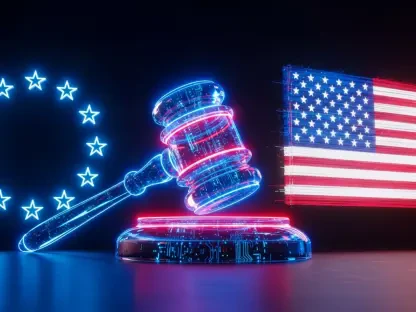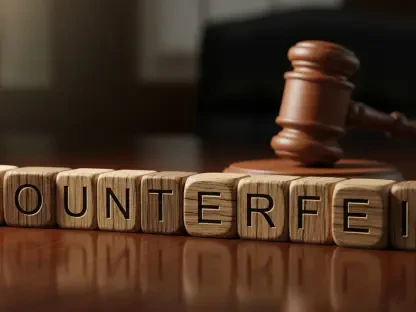Welcome to an insightful conversation with Desiree Sainthrope, a distinguished legal expert renowned for her deep knowledge of trade agreements and global compliance. With a keen interest in intellectual property and the transformative impact of technologies like AI, Desiree brings a unique perspective to the complex intersection of antitrust law and the tech industry. Today, we dive into the recent ruling by Judge Boasberg that Meta does not hold a social media monopoly, exploring the implications of this decision, the testimonies of key Meta executives, and the broader political and competitive dynamics at play in this high-stakes case.
Can you walk us through the core aspects of Judge Boasberg’s ruling that Meta does not have a social media monopoly?
Certainly. Judge Boasberg’s ruling came after a comprehensive six-week trial, and his decision hinged on the argument that Meta, despite its significant presence with platforms like Facebook, Instagram, and WhatsApp, does not constitute a monopoly in the social media market. He emphasized that the market is dynamic and highly competitive, pointing to evidence of rivalry with other major players. The judge also noted that Meta’s platforms serve distinct purposes and user needs, which undermines the notion of a singular, dominant control over the social media space. His perspective was that competition, rather than monopolistic behavior, drives Meta’s strategies and acquisitions.
What stood out to you about the specific arguments or evidence the judge relied on in his decision?
What was particularly striking was how Judge Boasberg focused on the differentiation between Meta’s platforms and the competitive pressures they face. He seemed to give significant weight to the idea that the social media landscape isn’t a monolith but a collection of niches where different platforms vie for attention. Testimonies about competition with emerging players like TikTok also played a crucial role, as they painted a picture of a market in flux, where no single entity can rest on its laurels without risking loss of relevance or user base.
Mark Zuckerberg’s testimony was notably lengthy, spanning over 10 hours. How did he frame the distinct roles of Facebook, Instagram, and WhatsApp in the social media ecosystem?
Zuckerberg was very deliberate in portraying each platform as serving a unique function. He described Facebook as a broad social networking tool focused on connecting people across various demographics, Instagram as a visually driven platform appealing to younger, creative users, and WhatsApp as a messaging service prioritizing privacy and global communication. His argument was that these differences prevent Meta from being seen as a single, overpowering force in social media, as each platform operates in its own competitive lane while complementing the others within Meta’s portfolio.
Instagram’s chief, Adam Mosseri, highlighted fierce competition with TikTok, especially for users under 30. How does this rivalry shape Instagram’s strategic direction?
Mosseri’s testimony underscored that Instagram is intensely focused on capturing and retaining the under-30 demographic, which TikTok has successfully targeted with its short-form, engaging content. This competition pushes Instagram to innovate rapidly, emphasizing features like Reels to mirror TikTok’s appeal while doubling down on visual storytelling. It’s a clear signal that Instagram’s strategy is reactive and adaptive, driven by the need to stay relevant in a segment of the market that’s incredibly trend-sensitive and quick to shift loyalties.
Sheryl Sandberg testified about Meta’s intentions with Instagram’s acquisition. How did she counter the narrative that it was merely to eliminate a competitor?
Sandberg was adamant that Meta’s acquisition of Instagram wasn’t about stifling a rival but about nurturing and scaling a promising platform. She highlighted Meta’s extensive investments in improving Instagram’s infrastructure, user experience, and feature set post-acquisition. Her argument was that Meta saw Instagram as a growth opportunity, not a threat to be neutralized, and that their efforts were geared toward enhancing value for users rather than consolidating market power.
Legal experts have pointed out that this ruling shifts attention to political dynamics, particularly involving President Trump. How do you see his relationship with Meta influencing potential reactions to this decision?
The relationship between Trump and Meta is layered with both collaboration and tension. Meta has supported some of Trump’s initiatives through funding and policy lobbying, which could suggest a level of alignment. However, Trump’s public criticism of judicial figures, including Judge Boasberg, adds a wildcard element. This ruling might be leveraged politically—either as a win to tout or a loss to rally against, depending on how it aligns with broader narratives around tech regulation and judicial oversight. It’s a delicate balance of business interests and political posturing.
William Kovacic, a former FTC chair, suggested the White House might have varied responses to this ruling. What do you think will guide their decision on whether to push for an appeal or accept the outcome?
I believe the White House’s response will largely depend on the political capital they stand to gain or lose. If appealing the ruling can be framed as a fight against big tech overreach, it might resonate with certain voter bases, especially given Trump’s past criticisms of Judge Boasberg. On the other hand, letting it stand could signal a pragmatic approach, focusing resources elsewhere if the FTC deems the likelihood of a successful appeal low. The decision will likely blend legal strategy with political optics, especially in an environment where tech policy is so polarizing.
What is your forecast for the future of antitrust scrutiny on tech giants like Meta following this ruling?
Looking ahead, I expect antitrust scrutiny of tech giants like Meta to intensify, regardless of this specific ruling. This decision might be a setback for regulators in the short term, but it also highlights the complexities of defining markets and competition in the digital age. We’ll likely see more nuanced cases focusing on specific behaviors or acquisitions rather than broad monopoly claims. Additionally, political pressures and public sentiment will continue to push for accountability, potentially leading to new legislative frameworks or regulatory approaches that adapt to the fast-evolving tech landscape.









